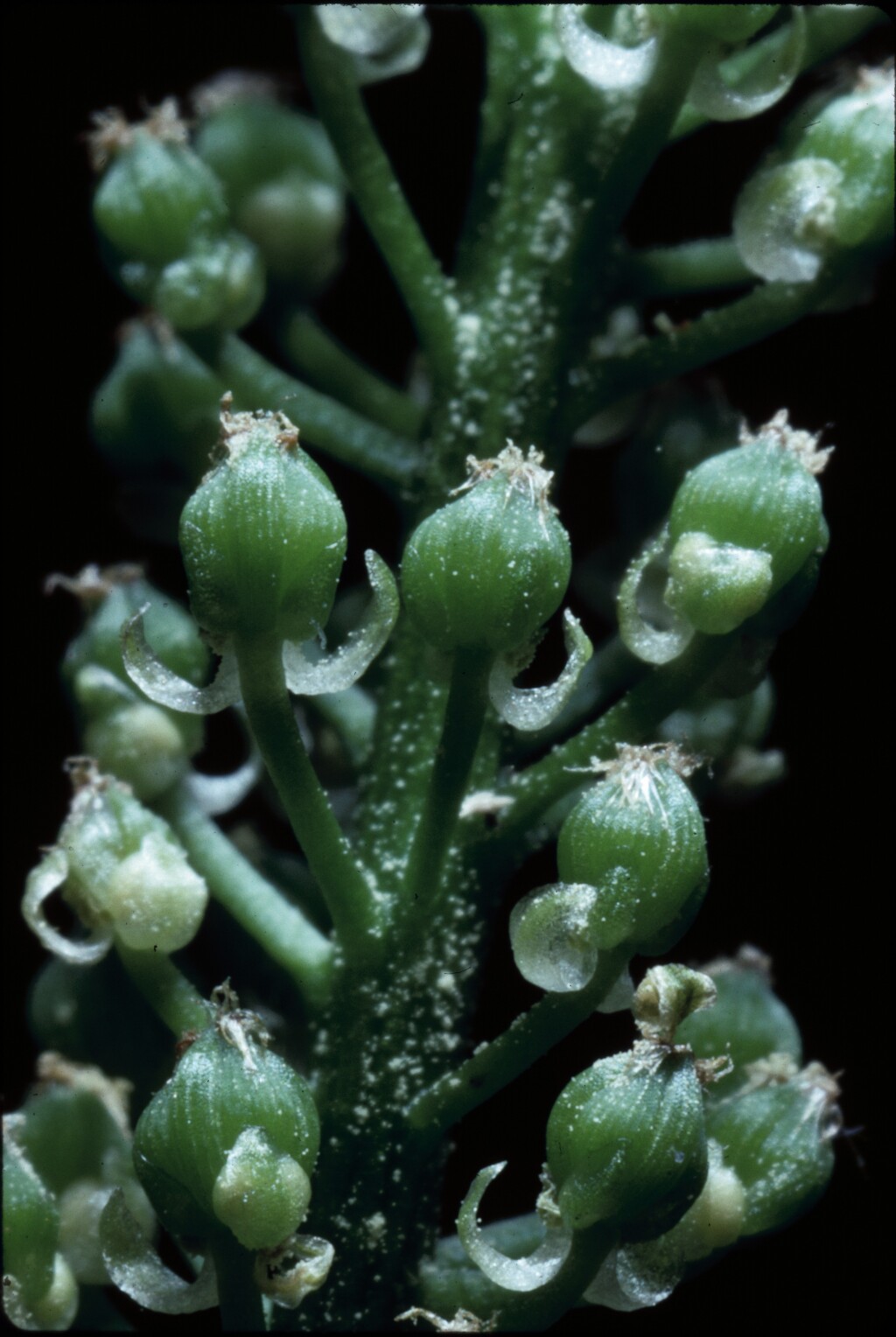Triglochin
Annual herbs of periodically or permanently swampy areas, rarely perennial; roots fibrous. Leaves basal, narrow or thread-like, flattened or, rarely, terete, to c. 30(–60) cm long, 1.5(–8) mm wide in Australia (bracketed values pertain to the anomolous T. scilloides); basal sheath open, usually without a ligule (but ligulate in T. scilloides). Inflorescence few–many-flowered, racemose, often spike-like, terminal on a prominent scape. Flowers bisexual, rarely with 2 solitary female flowers; perianth of 2 similar whorls of 3 segments, each segment usually falling with its attached stamen after anthesis; stamens usually 6, each with a 2-locular, subsessile anther; ovary superior, usually of 3–6 fertile carpels, each carpel with one ovule; style short, long and thread-like in female flowers, stigma often recurved. Fruit dehiscent or indehiscent, with hooks, spurs, keels or wings, the carpels readily separating. Seed 1 per carpel.
About 20 species, cosmopolitan, with its greatest development in Australia and temperate South America.
Perennial species with woody rhizomes and tuberous roots previously included in Triglochin are now placed in a separate genus Cycnogeton. The monotypic and florally distinct genus Lilaea has recently been included in Triglochin on the basis of molecular data and similarity in vegetative characters (Von Mering & Kadereit 2010). This species is sometimes regarded in its own family, the Lilaeaceae, and its placement in Triglochin seems surprising.
Conn, B.J.; Aston, H.I. (1994). Juncaginaceae. In: Walsh, N.G.; Entwisle, T.J., Flora of Victoria Vol. 2, Ferns and Allied Plants, Conifers and Monocotyledons, pp. 137–146. Inkata Press, Melbourne.
 Spinning
Spinning



